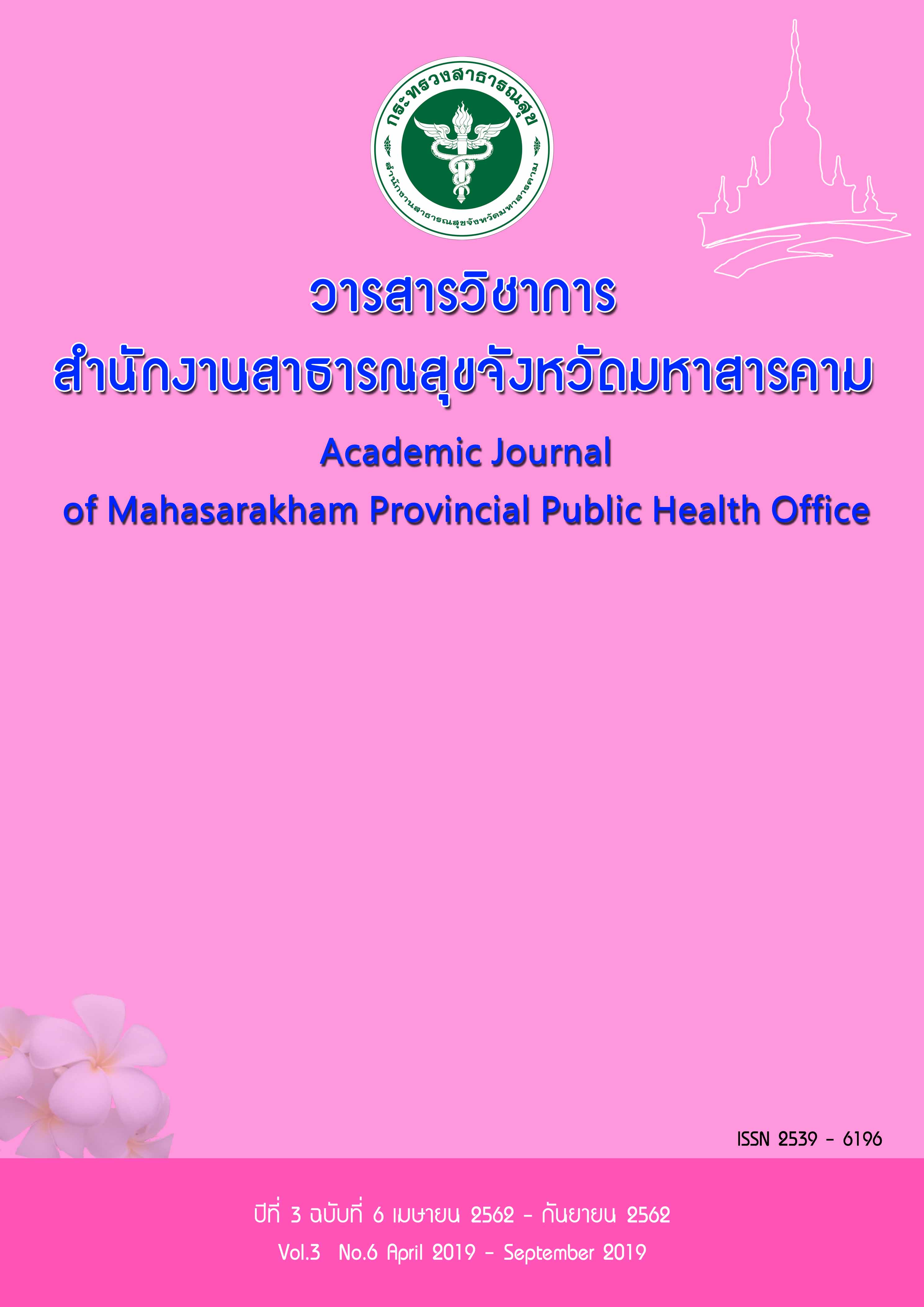การพัฒนาระบบการเฝ้าระวังการติดเชื้อในโรงพยาบาล โรงพยาบาลบึงกาฬ พ.ศ. 2562 The Development of the Healthcare-Associated Infection Surveillance System in Buengkan Hospital 2019
Abstract
Abstract
This study was a research and development that aimed to develop and study the outcome of the development of a healthcare-associated infection surveillance system in Buengkan Hospital. The 182 participants were registered nurses working at the hospital and at health-promoting hospitals in the Mueang Buengkan district. These participants were purposively selected. The research included four phases: 1) a survey and synthesis of the problem status and needs, 2) the designing of the surveillance system (using the synthesized information based on the hospital context) and the development of the surveillance system program (IC BKHos) in the hospital, 3) a test of the developed surveillance system in ten wards, and 4) an evaluation of the system by comparing the results at pre- and post-intervention. The study took place between 1 October 2018 and 30 September 2019. The research tools included 1) the developed surveillance system, 2) the IC BKHos program, and 3) the IC BKHos program instruction book. The data collection tools included 1) an evaluation form for the surveillance system and 2) a form for a monthly report and a form for completing the data analysis by percentage, mean, standard deviation (SD), and paired t-test.
The developed healthcare-associated infection surveillance system tested the combined use of both hospital-wide surveillance by infection control ward nurses (ICWN) and targeted surveillance by infection control nurses (ICN). This system was different from the old system in that it involved active surveillance, which the nurses performed daily in the wards that included a risk group of patients. Additionally, there was an increase in the number of ICN, an enhancement of ICWN competency, and the development of the IC BKHos program for surveillance and reports. The finding was that the efficiency of the healthcare-associated infection surveillance system increased to 100% (90% standard). The mean difference of the monthly reports and the completeness of the data at pre- and post-development of the surveillance system were significantly statistically different at 0.05 (p-value <0.001).
Keywords : Surveillance system healthcare-associated infection, infection in hospital, Buengkan Hospital.


